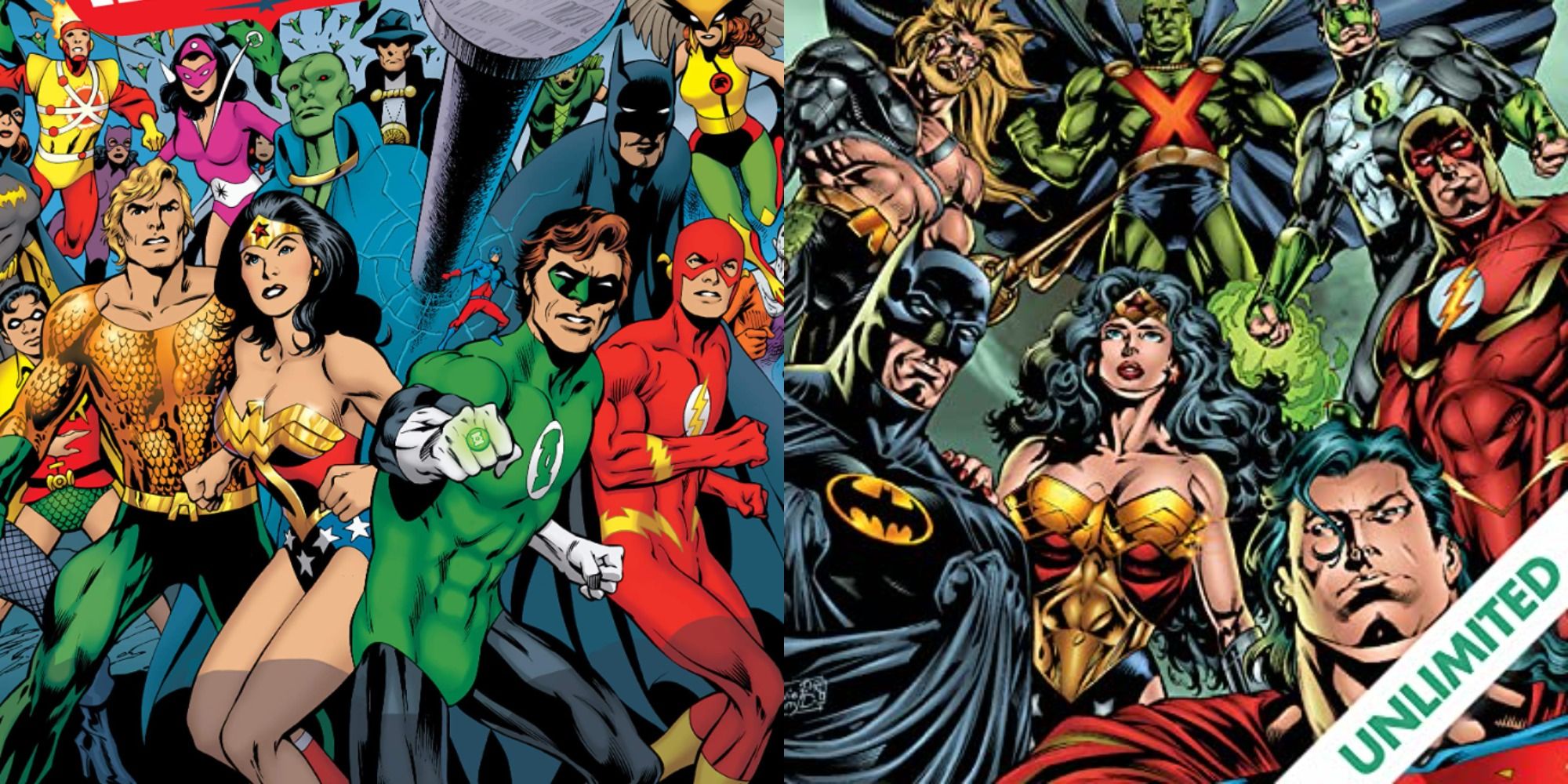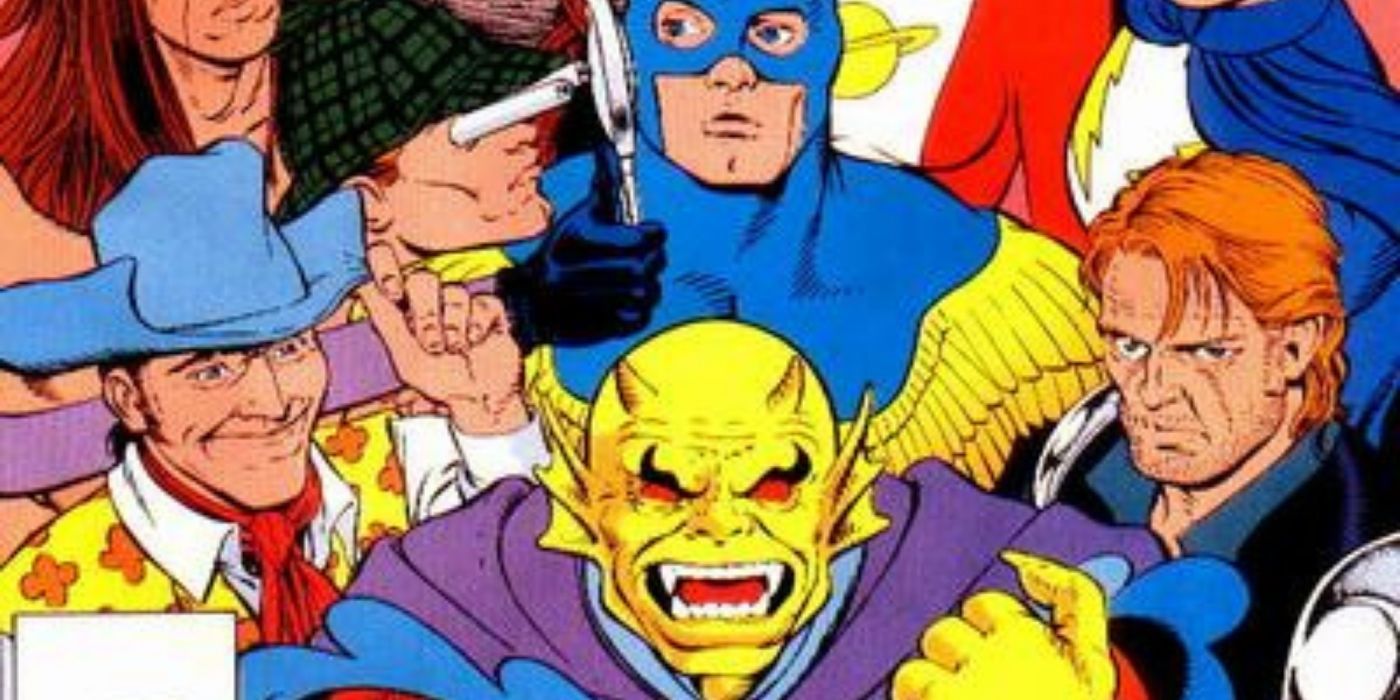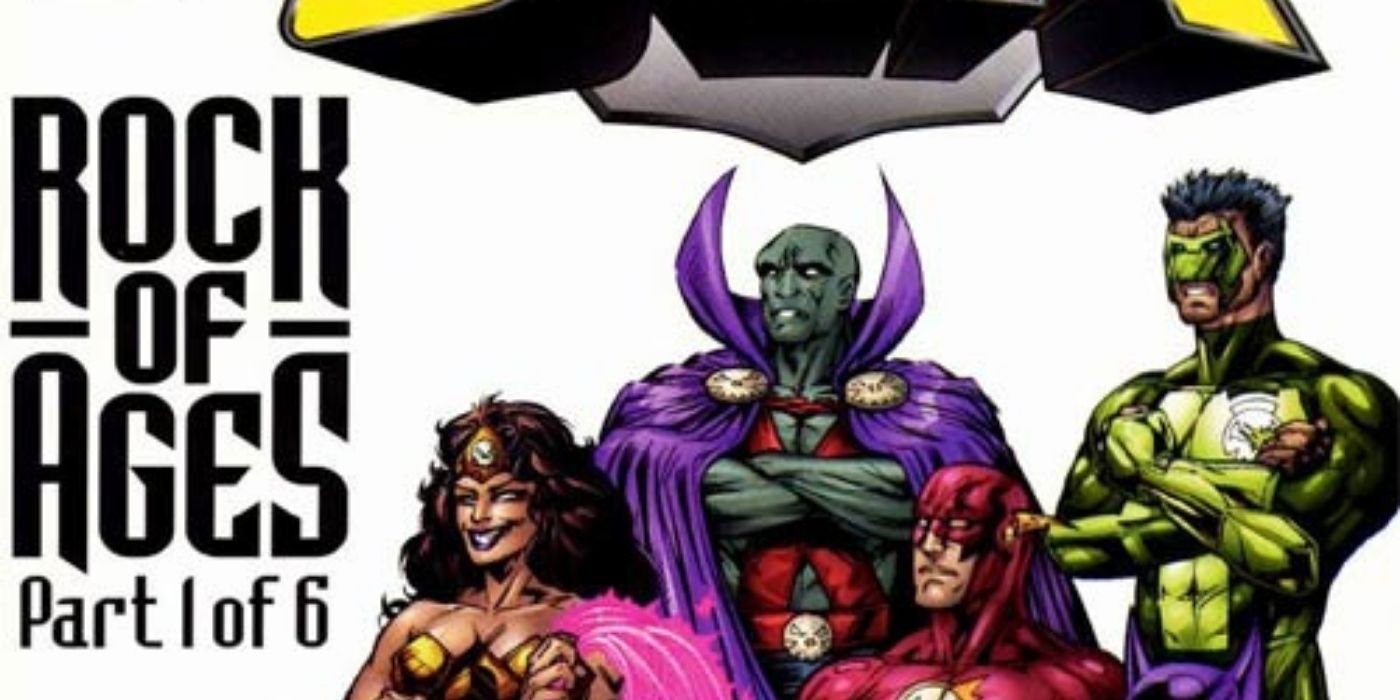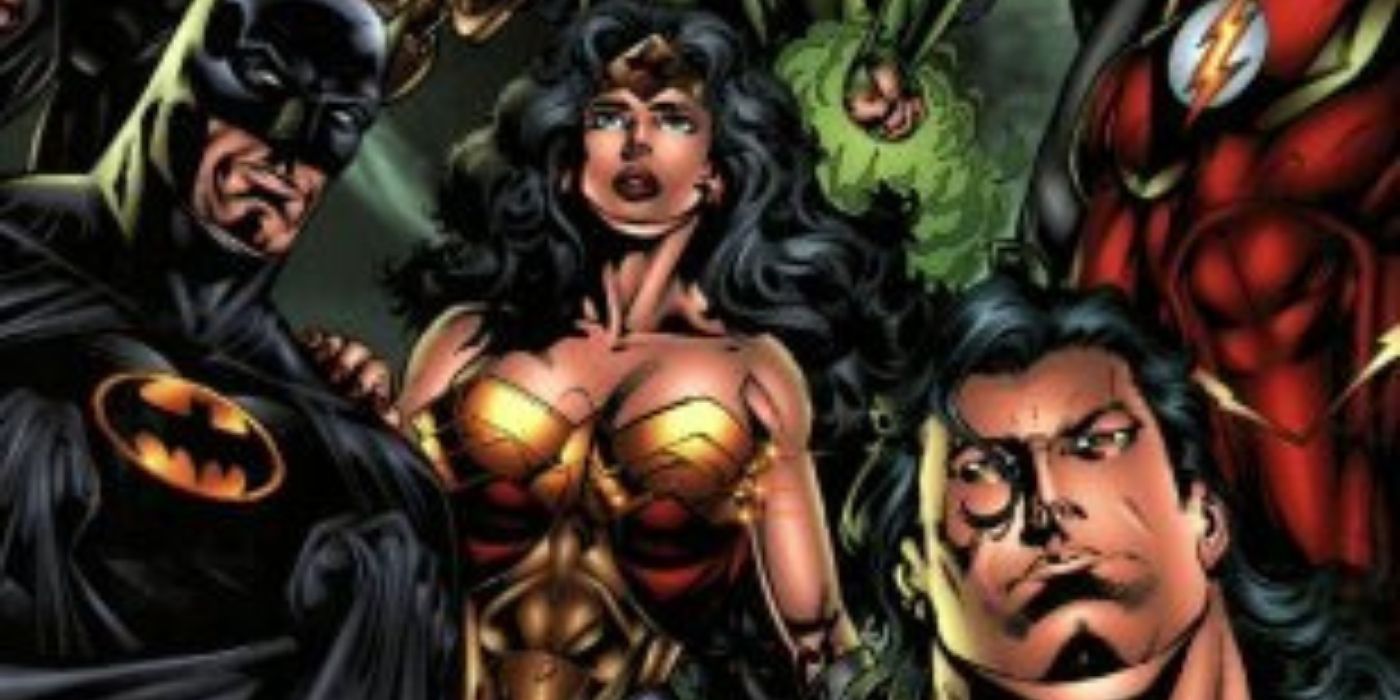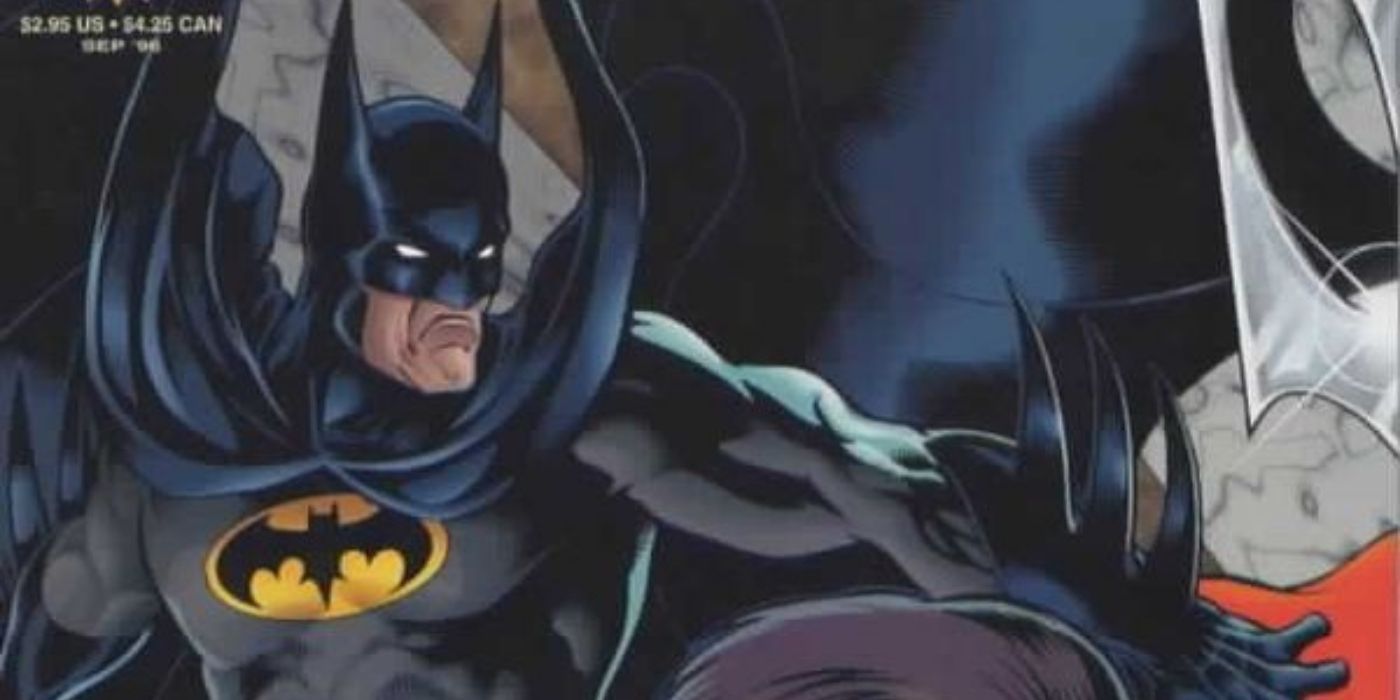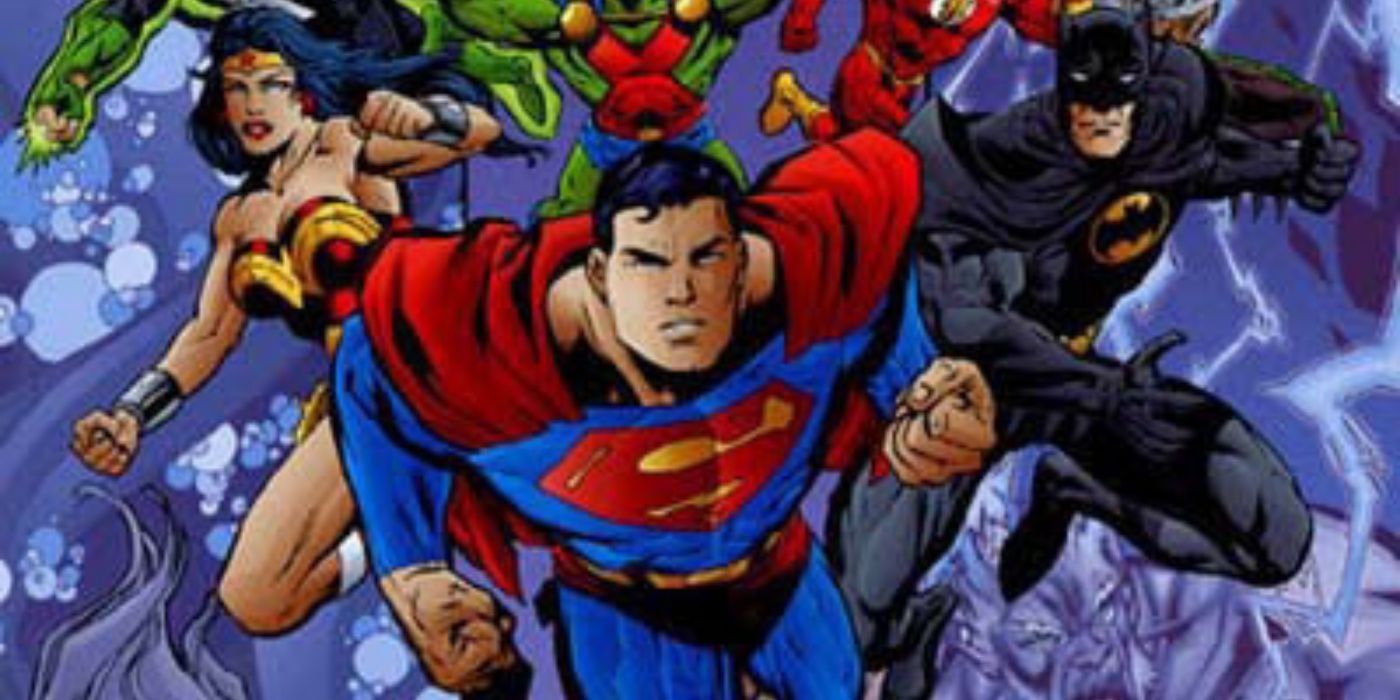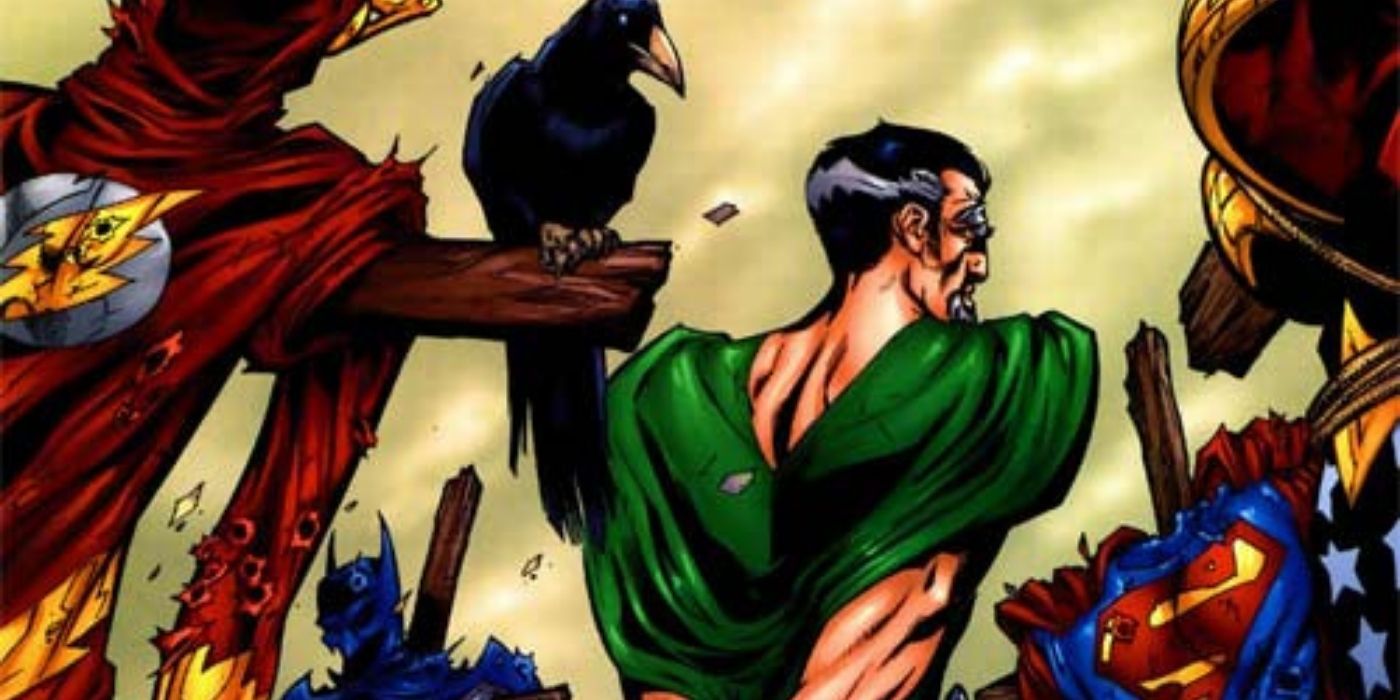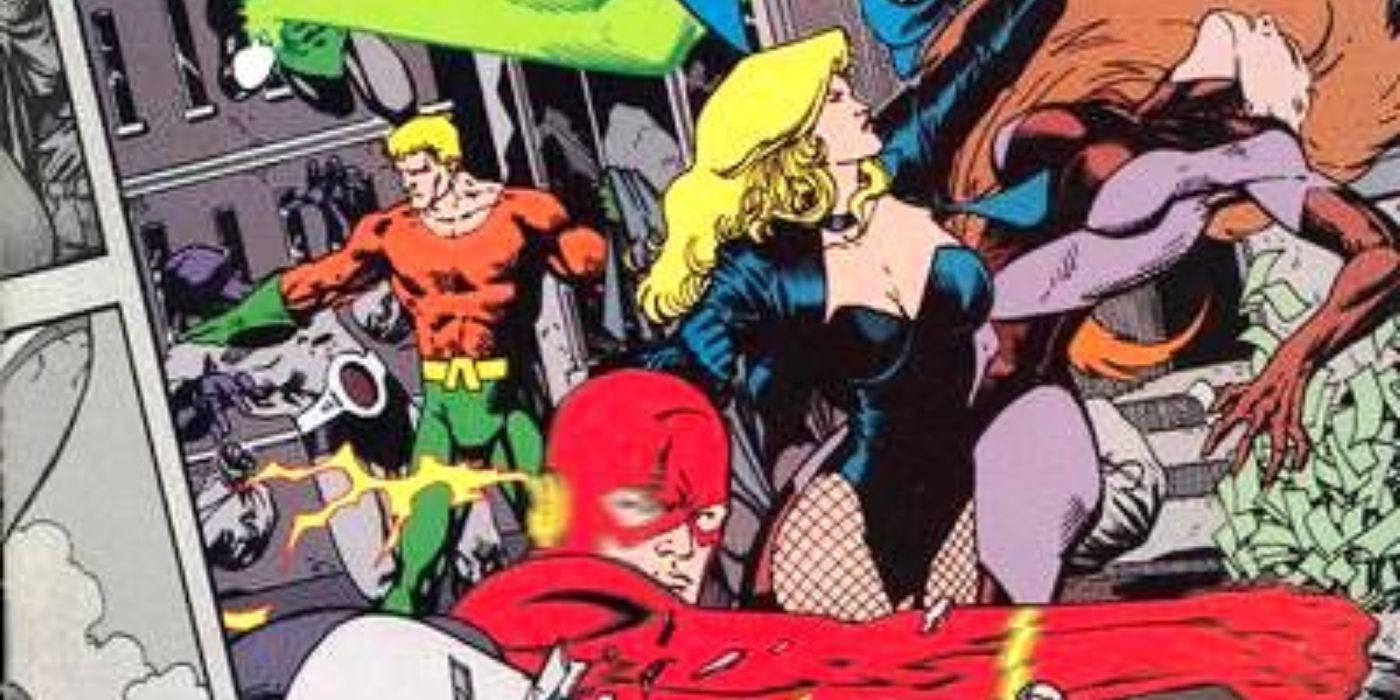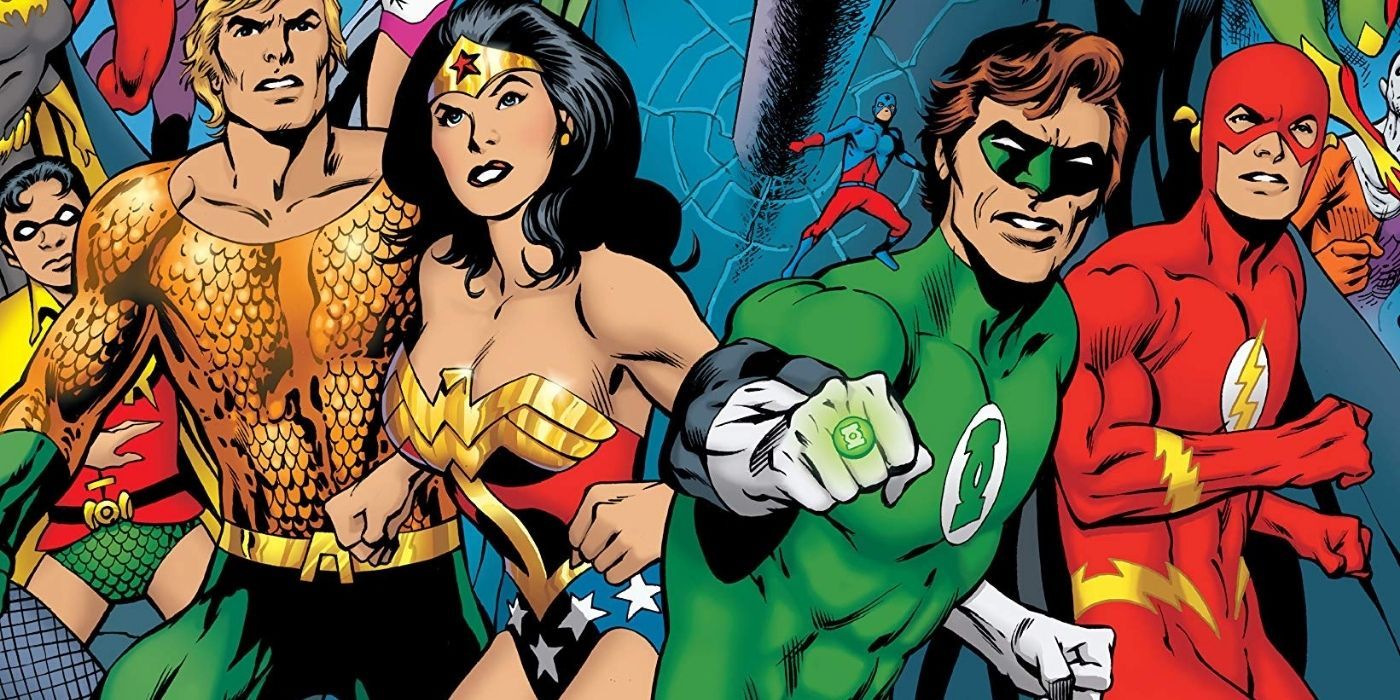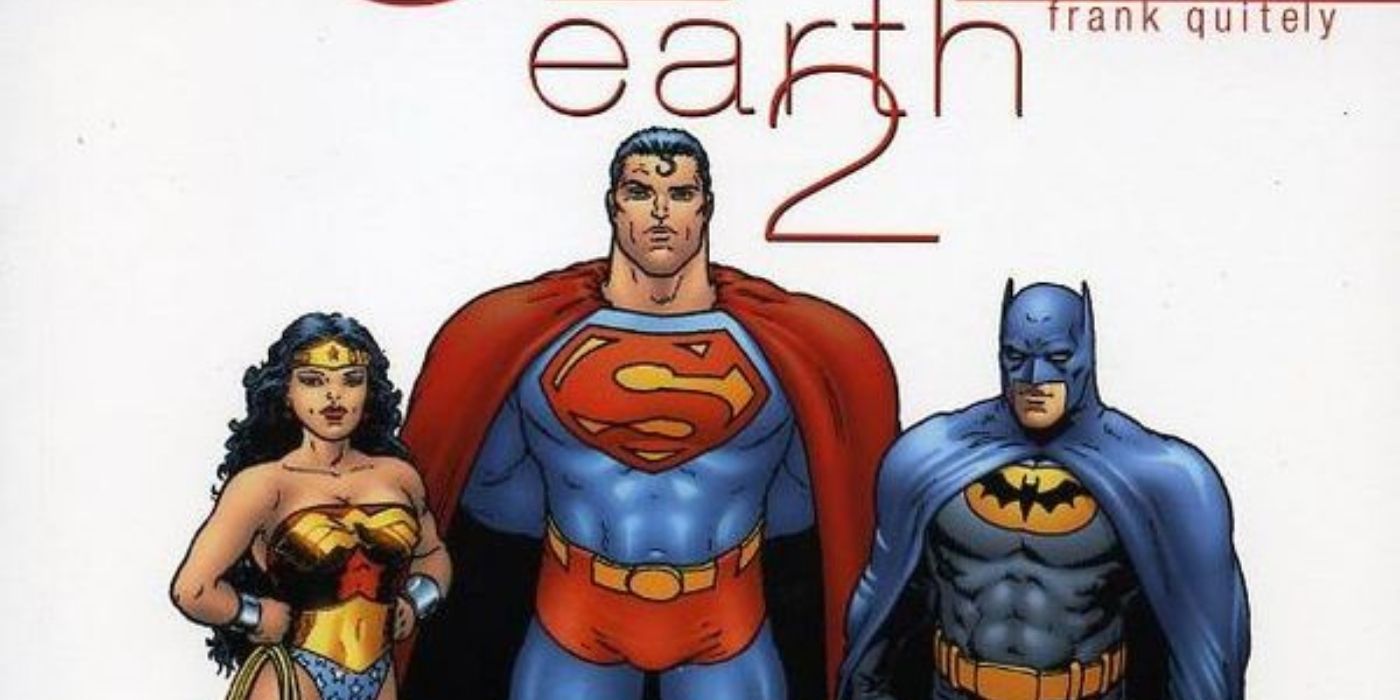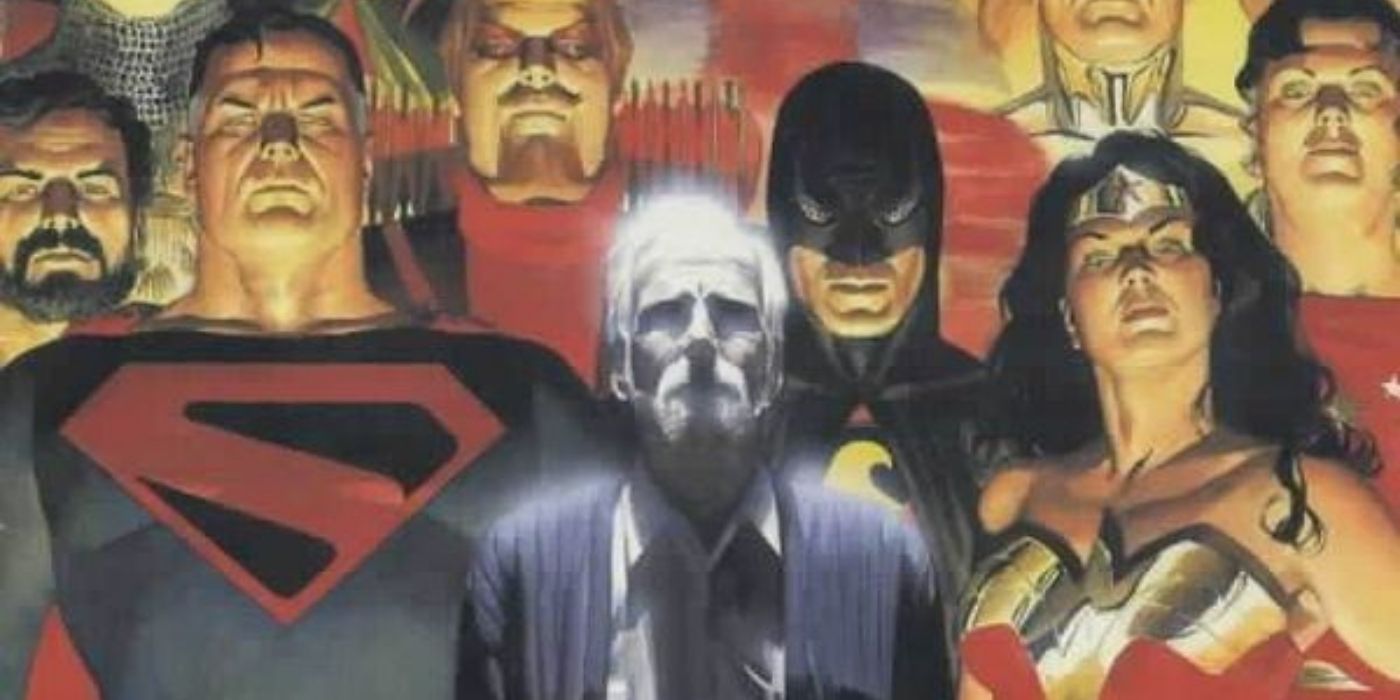The Justice League was in for big changes in the '90s, with the cancellation of the version of the League from the '80s, Justice League International. The league would get another reboot in 1997 with Grant Morrison's and Howard Bender's "New World Order" bringing back the original members.
From the time of the '40s Justice Society to today, the team of heroes banding together has been a popular one. The Justice League in all its forms is carrying on the tradition: a group of like-minded people with similar or different abilities gathering to fight common enemies or just for fellowship.
Justice League Europe Annual #2, 1991: “Too Much Time”
Waverider is here to see into the future of the various members of the JLI to see which hero is fated to turn evil. What he finds is instead is each hero stranded in the past, unable to explain how they got there and unable to get back.
A cat sends the members back by stopping villains from stealing a time machine, which explodes and takes the league with it. This is a fun and funny issue, a peak for this lighter incarnation of the '80s JLA and written with tongue firmly in cheek. This issue is part of the big DC crossover "Armageddon" that was going across the DCU at the time.
JLA #10-15, 1998: “Rock of Ages”
The mighty Darkseid, ruler of Apokolips, is one of the League's deadliest foes, but they have defeated him time after time, but now, Darkseid and his minions have beaten the Justice League. The nearly broken league must pull together with everything they have left to beat back Apokolips and Darkseid.
Grant Morrison and Howard Porter started their run with the return of the 'Big Seven', the League's original members returning to the lineup. It had been a long time since they were back all together in various incarnations of the JLA. By the time of "Rock of Ages," Morrison loosened up a bit. The whole run feels like a tribute to the old DCU.
Justice League #1-4, 1997: "New World Order"
"New World Order" introduces a new group of superheroes that have come from other planets to ‘help out’ on earth. They seem amazingly able to cure some of the world’s problems and become popular enough to eclipse the original League. The JLA discovers that they are would-be tyrants, out to rule and subjugate earth.
This is Morrison, bringing back the original Justice League, with Howard Porter on art. It's the start of a 'back to basics' approach that the JLA had needed after the more dispersed Justice League International run, and it was highly successful, leading to a resurgence of the team, and yet another great run for Morrison.
Justice League: #1-3, JLA: Year One #1-2, 1996: "A Midsummer's Nightmare"
Dr. Destiny strips the JLA of all their powers and then distributes them to the general population of earth. The heroes are forced to live normal, everyday lives. Although the JLA has no powers, they still have the need to help people, to do good in the world.
Mark Waid's superpower is to take old characters and situations and give them a fresh spin, introducing humanity into characters seen by some to be almost gods. He makes even the most minuscule of side characters interesting and relatable. He did this run after run and title after title and he brings that humanity to the JLA.
Justice League America #24-33, 1998: “Justice For All”
Amazo, the one-man (robot) Justice League is back and threatens to take away the League's power in this lead-up to the World War III event. Readers get the Ultramarine Corps, an elite squad of government super-beings, the return of the White Martians, and the JLA fight alongside the JSA.
This Grant Morrison story follows "Strength in Numbers" and the DC One Million crossover, leading into the massive World War III conclusion crossover event. Morrison has a lot of storytelling to juggle here and drives it forward to World War III. Some of the events here will foreshadow the coming Final Crisis which is still years in the future.
JLA #43-46, 2000: "JLA: Tower of Babel"
Ra’s al Ghul, using his knowledge of Batman, steals his contingency plans on dealing with a Justice League gone rogue and uses those plans against them. This causes each hero not only to work to defeat Ra’s but to defeat the plans of one of their most brilliant members.
This is a Batman gone too far, one that in his obsessive paranoia is now working on defeating those he has called friends. Batman may be an obsessive planner, but even the League knows there are lines not to be crossed, and Batman has to deal with the consequences of his actions.
JLA: Year One #1-12, 1998-99
It’s year one for the young Justice League, and they’re struggling to work as a team, and some have only been heroes themselves for a short time. This re-tells the origin of the League but for the Post-Many Crisis’ DC has had, so some things are changed around (Black Canary in for Wonder Woman) and some are retconned.
This was a 12-issue miniseries written by Mark Waid, and even though there have been more changes in DC history, this is well worth looking up. It's a tribute to the DC Silver Age and its heroes.
Justice League America: "The Nail" 1998
Suppose they had an Earth-One with no Superman? On a dusty Kanas road, a nail gets embedded into the tire of Jonathan and Martha Kent so they never find Kal-El, they don’t adopt him and they don't raise him to be a hero.
What would the Justice League be like with the original inspiration of Superman? What would the world be like? This is an excellent Elseworlds by Alan Davis, and everything the line was created to tell: smart, sometimes mind-bending looks at what the world could and would be if this happened.
JLA: Earth 2, 2000
The Justice League comes up against their mirror opposites: The Crime Syndicate, a group of superpowered villains from a world that has never known heroes, only beings who use their powers for evil.
There are no heroes and evil is not only celebrated, it's the norm. The League is in a quandary; to solve the evil of this other earth, would be taking away the only life the people of Earth 2 know. This is their whole society and nature, so who is the Justice League to say that this is wrong? They have to fight to stop the criminals from infesting their world and maybe inspire hope in the other.
Kingdom Come: 1996
The original superheroes have retired, grown too old, or are too bewildered by the new generation that has arisen in their place; more cynical, more brutal, and without the empathy and humanity showed by the old guard. They have few qualms about killing as well. The old heroes will have to come back.
This is simply Mark Waid's and Alex Ross' masterpiece, a truly beautiful book, both in writing and art. Every classic character rings true, full of the humanity that Waid is known for, and brought to full life by Ross' art. A milestone in DC history, and a great pairing with Darwyn Cook's The New Fronteir. A must-read.

